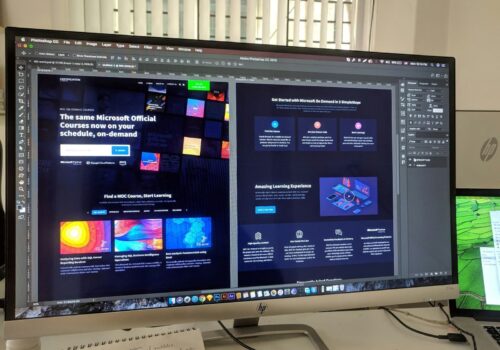Understanding Software Security: Protecting Your Digital Assets
In an increasingly digitized world, software security has become a cornerstone of personal and organizational safety. From personal devices to large-scale enterprise systems, software acts as the backbone of modern life. However, this reliance also makes software a prime target for cyber threats such as malware, ransomware, phishing attacks, and data breaches. Understanding software security is essential to protecting digital assets, ensuring privacy, and maintaining the integrity of systems. This article explores the fundamentals of software security, common threats, and best practices to safeguard digital assets.
1. The Importance of Software Security
Software security refers to the measures and practices implemented to protect software applications and systems from unauthorized access, disruption, and exploitation. Its importance cannot be overstated in a world where sensitive data, including personal information, financial records, and intellectual property, is often stored and processed digitally.
Without robust software security, individuals and organizations are vulnerable to:
• Data Breaches: Exposing sensitive information to unauthorized entities.
• System Disruption: Interruptions caused by cyberattacks can halt operations and lead to financial losses.
• Reputation Damage: Security breaches can erode trust among customers and stakeholders.
2. Common Software Security Threats
Understanding potential threats is the first step toward effective software security. Here are some of the most prevalent risks:
• Malware: Malicious software, such as viruses, worms, and spyware, designed to damage or disrupt systems.
• Ransomware: A form of malware that encrypts files and demands payment for their release.
• Phishing Attacks: Fraudulent attempts to obtain sensitive information by posing as a trustworthy entity.
• SQL Injection: Exploiting vulnerabilities in a database-driven application to execute malicious SQL commands.
• Zero-Day Vulnerabilities: Exploiting unknown or unpatched software weaknesses before developers can address them.
• Denial-of-Service (DoS) Attacks: Overloading a system with traffic to render it inoperable.
3. Principles of Software Security

Building secure software begins with adhering to core principles designed to minimize vulnerabilities:
• Confidentiality: Ensuring that sensitive information is accessible only to authorized users.
• Integrity: Maintaining the accuracy and consistency of data throughout its lifecycle.
• Availability: Ensuring that systems and data are accessible when needed.
• Authentication and Authorization: Verifying user identities and granting appropriate access levels.
• Least Privilege: Limiting user access to the minimum necessary for their roles to reduce potential damage.
4. Best Practices for Protecting Digital Assets
To defend against threats and maintain software security, individuals and organizations must adopt best practices:
• Regular Updates and Patching: Keep software up to date to address known vulnerabilities and apply security patches as soon as they are available.
• Strong Password Policies: Use complex, unique passwords and enable multi-factor authentication (MFA) to enhance account security.
• Encryption: Protect sensitive data in transit and at rest using robust encryption methods.
• Secure Coding Practices: Developers should follow guidelines that prioritize security during the software development lifecycle, such as input validation and avoiding hard-coded credentials.
• Firewalls and Antivirus Software: Deploy firewalls to monitor and control network traffic, and use reliable antivirus programs to detect and eliminate malicious software.
• Regular Security Audits: Conduct vulnerability assessments and penetration testing to identify and address weaknesses in software and systems.
5. The Role of Artificial Intelligence in Software Security
Artificial Intelligence (AI) and Machine Learning (ML) are transforming software security by providing advanced tools to detect, prevent, and respond to threats.
• Threat Detection: AI-driven systems can analyze large volumes of data to identify unusual patterns that may indicate a cyberattack.
• Automated Response: AI can automate the response to certain types of threats, such as isolating infected systems to prevent further damage.
• Predictive Analysis: ML models can predict potential vulnerabilities based on past attack patterns, enabling proactive security measures.
6. The Human Factor in Software Security
While technological solutions are essential, human behavior plays a significant role in software security:
• User Education: Regular training on recognizing phishing attempts, creating strong passwords, and following security protocols reduces the likelihood of human error.
• Insider Threats: Employees with access to sensitive systems can inadvertently or maliciously compromise security. Monitoring and clear access policies mitigate this risk.
7. Trends and Challenges in Software Security
The rapidly evolving threat landscape presents new challenges and opportunities:
• Cloud Security: As cloud computing grows, securing data and applications in cloud environments becomes increasingly critical.
• IoT Vulnerabilities: The proliferation of Internet of Things (IoT) devices expands the attack surface for cybercriminals.
• Regulatory Compliance: Adhering to regulations like GDPR, HIPAA, or CCPA ensures that organizations meet legal requirements for protecting user data.
8. The Future of Software Security
The future of software security will likely see greater integration of AI, enhanced encryption standards, and increased collaboration between governments, industries, and academia. Proactive measures, such as secure-by-design software development and global threat intelligence sharing, will play key roles in countering emerging threats.
Conclusion
Software security is a dynamic and multifaceted field critical to safeguarding digital assets in an increasingly connected world. By understanding potential threats, adhering to best practices, and leveraging advanced tools like AI, individuals and organizations can significantly reduce risks and protect sensitive information. As technology continues to evolve, so too must our approach to software security, ensuring a safer digital landscape for all.




